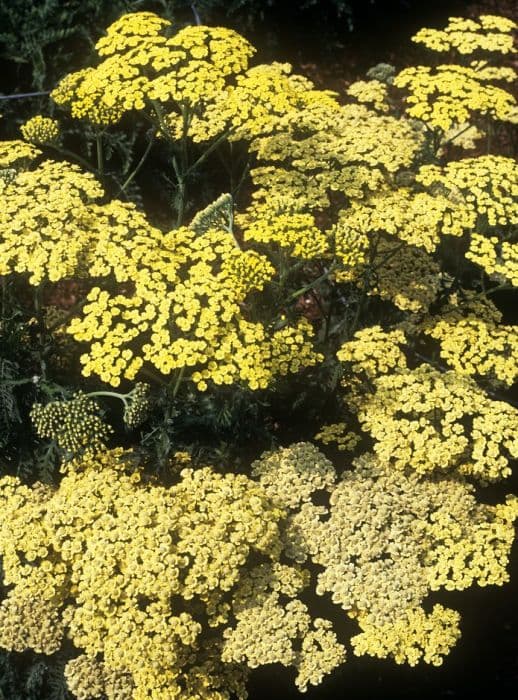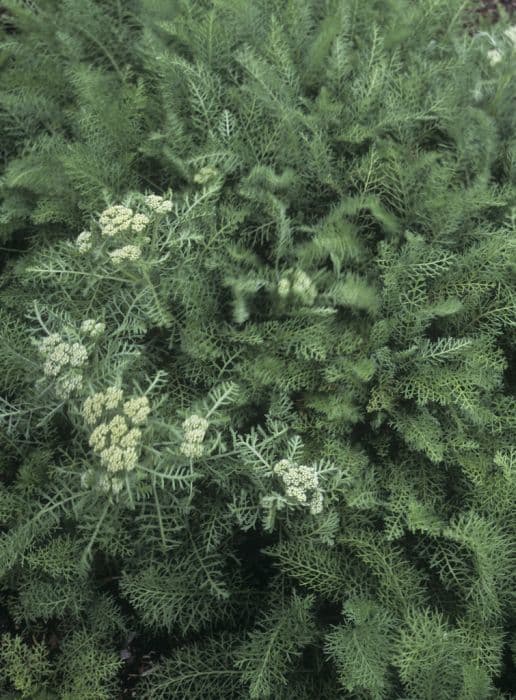Tagetes Sunburst Series, mixed

ABOUT
Tagetes Sunburst Series, commonly known as Marigold, is a vibrant and colorful flowering plant that is part of the aster family. This particular series boasts a mixture of lively hues including bright yellows, rich oranges, and warm reds, often with multiple shades blending seamlessly on a single flower. The blooms are large and showy, with a layered arrangement of petals that create a full, rounded look, resembling a miniature sunburst, which aptly describes their radiant appearance. The petals have a velvety texture and may display various patterns, such as solid colors or contrasting edges, giving each flower a unique and eye-catching appeal. The foliage of Marigold Sunburst Series is typically a deep green with a fern-like appearance, providing a lush backdrop for the spectacular blooms and enhancing their visual impact. These plants are a popular choice for gardeners wanting to add a splash of long-lasting color to their landscapes, as they tend to flower throughout the growing season until the first frost. Known for their strong, distinctive scent, the leaves and flowers of the Marigold carry a pungent fragrance that is often described as musky and is believed to repel certain garden pests. In addition to their ornamental uses, Marigolds are also appreciated for their role in companion planting and their utility in certain cultural and ceremonial contexts.
About this plant
 Names
NamesFamily
Asteraceae.
Synonyms
French Marigold, African Marigold.
Common names
Tagetes erecta Sunburst Series.
 Toxicity
ToxicityTo humans
Marigolds are considered to be non-toxic to humans. However, as with any plant, individual allergies or sensitivities can occur. If a person has a sensitivity to marigolds, they may experience symptoms like skin irritation if they come into contact with the sap, or gastrointestinal upset if parts of the plant are ingested in large quantities. It’s important to note that marigolds are generally not considered edible and consumption is not advised.
To pets
Marigolds are not known to be toxic to cats and dogs. However, if a pet ingests a large amount of the plant, it might experience mild gastrointestinal distress, such as vomiting or diarrhea, due to the non-digestible plant material and not due to toxicity. If these or any other concerning symptoms occur, it is advised to contact a veterinarian.
 Characteristics
CharacteristicsLife cycle
Annuals
Foliage type
Deciduous
Color of leaves
Green
Flower color
Mixed
Height
1 foot (30 cm)
Spread
1 foot (30 cm)
Plant type
Herb
Hardiness zones
2-11
Native area
Americas
Benefits
 General Benefits
General Benefits- Enhances Garden Aesthetics: The Tagetes Sunburst Series, also known as Marigold, adds vibrant colors and visual interest to gardens and landscapes.
- Easy to Grow: Marigolds are known for their low maintenance and easy care, making them suitable for gardeners of all skill levels.
- Pest Repellent: Marigolds produce a natural chemical that can repel nematodes and other garden pests, protecting nearby plants.
- Attracts Beneficial Insects: They attract pollinators such as butterflies and bees, which are essential for the pollination of many plants.
- Companion Planting: Marigolds are often planted alongside vegetables and flowers as companion plants to deter pests and enhance growth.
- Season-Long Blooms: Marigolds can bloom from early summer until frost, providing long-lasting color and interest in the garden.
- Symbolism and Tradition: Marigolds carry cultural significance in various traditions and are often used in festive decorations and religious ceremonies.
 Medical Properties
Medical PropertiesThis plant is not used for medical purposes.
 Air-purifying Qualities
Air-purifying QualitiesThis plant is not specifically known for air purifying qualities.
 Other Uses
Other Uses- Companion Planting: Marigolds are commonly used in companion planting to repel pests and attract beneficial insects like ladybugs and bees to gardens.
- Chicken Feed Additive: The petals of marigolds can be used in chicken feed to enhance the color of egg yolks due to their high carotenoid content.
- Dye Plant: The brightly colored flowers of marigolds can be used to create a natural dye for fabrics, yarn, or paper.
- Culinary Garnish: Edible varieties of marigolds can add a splash of color to salads and desserts as a decorative garnish.
- Marigold Tea: The petals can be steeped in hot water to make a calming tea, with a flavor that is mildly citrusy and spicy.
- Biological Control Agent: Marigold roots release a chemical that can suppress nematodes, thus protecting other plants from these pests.
- Ritual and Festive Decor: In various cultures, marigolds are used to decorate altars, graves, and spaces for festivals like Dia de los Muertos.
- Marigold 'Ink': The juice from marigold flowers can be used to make a simple, natural ink for art or craft projects.
- Herbal Sachets: Dried marigold flowers can be used in herbal sachets to impart a pleasant fragrance to linens and clothes.
- Floral Arrangements: Dried or fresh marigold flowers can be used in floral arrangements for their vibrant colors and longevity.
Interesting Facts
 Feng Shui
Feng ShuiMarigold is not used in Feng Shui practice.
 Zodiac Sign Compitability
Zodiac Sign CompitabilityMarigold is not used in astrology practice.
 Plant Symbolism
Plant Symbolism- Life and Vitality: The vibrant colors of the Marigold represent energy and the vigor of life.
- Joy and Happiness: Marigolds are often associated with the sun, symbolizing cheerfulness and optimism.
- Overcoming Challenges: Their ability to bloom in the face of adversity symbolizes strength and the capability to overcome life’s challenges.
- Remembrance and Grief: In some cultures, Marigolds are used in ceremonies to honor the dead, signifying remembrance and the sorrow of parting.
- Beauty and Warmth: The lush appearance of Marigolds reflects beauty and the warmth of human emotion.
- Sacred Offerings: In many traditions, Marigolds are considered sacred and are used in religious ceremonies and offerings.
- Love and Devotion: With their intense hues and association with the sun, Marigolds can represent strong feelings of affection and commitment.
- Protection: The pungent scent of Marigolds is believed to ward off pests and negativity, symbolizing protection and safety.
 Water
WaterMarigolds in the Tagetes Sunburst Series should be watered regularly to keep the soil consistently moist, but not soggy. They require approximately 1 inch of water per week, either from rainfall or watering. During hot, dry periods, this may mean watering every few days; in cooler, wetter conditions, less frequent watering may be required. It's best to water at the base of the plant to avoid wetting the foliage, which can lead to disease. To conserve moisture and reduce the need for watering, use mulch around the plants.
 Light
LightMarigolds, including those in the Tagetes Sunburst Series, thrive in full sun. They need a minimum of 6 hours of direct sunlight per day to develop their best flowering and growth. When choosing a spot for them, seek a location that gets unfiltered sunlight throughout the day. Partially shaded locations can result in fewer blooms and less vigorous plants.
 Temperature
TemperatureMarigolds from the Tagetes Sunburst Series prefer warm temperatures and are best suited to areas where the temperature ranges from 70°F to 80°F. They can tolerate minimum temperatures down to around 32°F but frost will damage them. Continued exposure to temperatures below 50°F isn't ideal for these heat-loving plants and may inhibit growth and flowering.
 Pruning
PruningRegular deadheading of spent blooms on Marigolds in the Tagetes Sunburst Series encourages more blooming and maintains a neat appearance. Light pruning can also be done to shape the plants and encourage bushier growth. Pruning is generally done throughout the blooming season, whenever flowers fade or the plant looks leggy. The best time to prune is in the late afternoon when the midday heat has passed.
 Cleaning
CleaningAs needed
 Soil
SoilMarigolds from the Tagetes Sunburst Series thrive best in well-drained, fertile soil with a pH of around 6.0 to 7.5. A good mix for these marigolds would be equal parts of garden soil, peat moss or coconut coir, and perlite or vermiculite to ensure proper drainage. Ensure the soil is enriched with compost or a balanced, slow-release fertilizer to support their vibrant blooms.
 Repotting
RepottingMarigolds of the Tagetes Sunburst Series generally do not require frequent repotting, especially since they are often grown as annuals. If grown in containers, repot them every spring if they have overwintered or become root-bound, using fresh potting mix to revive nutrient content.
 Humidity & Misting
Humidity & MistingMarigolds of the Tagetes Sunburst Series are tolerant of a wide range of humidity levels, but they prefer moderate conditions. They thrive in outdoor environments where the humidity mirrors their native habitats, which is not particularly high. As long as the plants are not in overly dry air, they should flourish without the need for specific humidity adjustments.
 Suitable locations
Suitable locationsIndoor
Place in sunny spot, water moderately, well-drained soil.
Outdoor
Full sun, well-drained soil, water when dry.
Hardiness zone
2-11 USDA
 Life cycle
Life cycleThe Tagetes Sunburst Series, commonly known as Marigold, begins its life cycle when seeds are sown in warm, well-drained soil after the threat of frost has passed. Germination takes place in a few days to two weeks, after which the seedlings emerge with their first set of true leaves. As the Marigold grows, it develops a bushy structure with dark green foliage and buds that form at the tips of the branches. The buds bloom into large, double flowers in a mix of yellows, oranges, and reds, typically during spring and summer. The plant reaches maturity and continues to flower for several months, attracting pollinators and possibly repelling certain pests. Finally, as the flowering diminishes, seeds form and are dispersed, completing the cycle and potentially giving rise to new plants the following season.
 Propogation
PropogationPropogation time
Spring to Summer
The Tagetes Sunburst Series, commonly known as Marigold, is best propagated through seeds, and the ideal time for this is in the spring after the last frost when the soil begins to warm. To propagate Marigolds, spread the seeds lightly over the soil surface and then sprinkle a thin layer of soil on top to cover the seeds, not exceeding 1/4 inch (about 6 mm) in depth. Moisten the soil gently to provide adequate hydration for seed germination without causing the seeds to wash away. Covering the seeding area with a plastic sheet or propagation dome can help maintain consistent moisture levels. Seeds typically germinate in 4 to 14 days when kept at a temperature around 70 to 75 degrees Fahrenheit (approximately 21 to 24 Celsius). Once seedlings appear and reach a height of a couple of inches, they can be thinned or transplanted to ensure enough space for individual plant growth.









